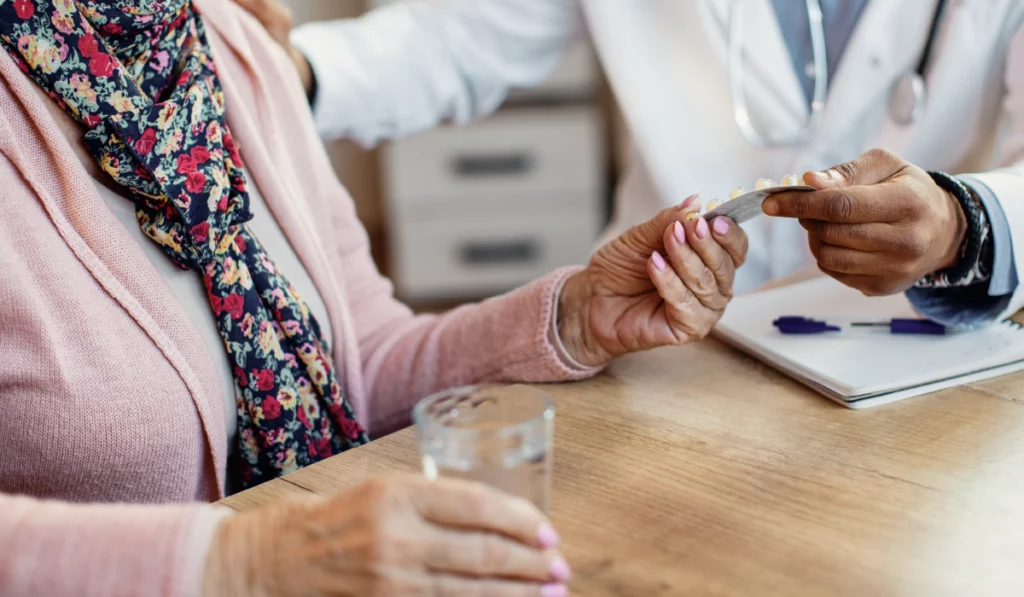In the broadest sense of the word, we understand ‘vulnerability’ as the susceptibility of an individual to physical or mental harm. In the context of research and participants of clinical trials, this term implies either:
- A person’s inability to give informed consent, due to a lack of autonomy or understanding of the research principles, options and/or risks. This could be the case for children, patients with cognitive impairments or certain psychiatric conditions.
- The possibility of a person being unduly influenced to participate in a research study, by caretakers, investigators, family members, other hierarchical relations, or by the possibility of financial gains. Examples of vulnerable subjects in this context would include institutionalized patients and prisoners, the elderly, or homeless people.
Understandably, there has been some controversy around the question of whether individuals belonging to a vulnerable group could or should participate in clinical trials, and what the importance of representing these population in such trials really is.
Clinical trials inclusion
Clinical research involving vulnerable populations is one of the most challenging ethical issues in research, as these groups include pregnant women, children, the elderly, homeless individuals, convicts, refugees, and undocumented individuals, among others.
The Belmont Report was the first ethical guide in human research to specifically identify these groups, highlighting their vulnerability to exploitation, and how this could push them into participating in clinical research. This vulnerability stems from their dependence, diminished capacity, or inability to provide informed consent, as well as their placement in institutions and healthcare environments prone to research. The Belmont Report emphasized that all individuals should be treated as autonomous agents, and those whose autonomy is diminished have the right to be protected.
But protected does not mean excluded. Inclusion and representation of diverse groups in research, including vulnerable ones, is key for improving healthcare:
- By not including a variety of participants in a clinical trial, the applicability of results to a broader population might be limited.
- Different groups may react differently to a drug or intervention, and the lack of evidence in certain groups can lead to reluctance in using it by healthcare professionals.
- By including diverse participants, the scientific evidence generated is richer and can replace subjective opinions and speculation.
- The effective implementation of interventions and treatment plans can also be complex and must be tested in various groups to ensure it can be easily applied to real-life scenarios.
Ultimately, the participation of minorities and vulnerable groups allows for more inclusive decision-making in healthcare. What’s more, this is supported by the ethical principle of “no decision about me, without me”, which should always be upheld.
Protection of vulnerable groups in research
Then, how can vulnerable populations be safeguarded? Individuals with specific vulnerabilities require appropriate protective measures. For example, for people who may have difficulty understanding and interpreting certain documents, consent forms in clearer language should be made available, as well as additional educational resources, assistance of interpreters, and translated materials.
Because vulnerability can be due to different reasons, researchers must have a plan for conducting objective capacity assessments and use representatives and advocates, including advanced directives. The consent process should be carefully planned and adjusted as needed. One adjustment strategy is the implementation of a stepped consent, where formal consent is obtained at various stages during the research, presenting manageable blocks of information to facilitate understanding.
Clinical trials for pregnant women
Clinical trials involving pregnant women present ethical challenges due to their historical exclusion from clinical trials, concerns about potential risks to both the mother and the fetus, and ambiguity in policies and regulations. However, due to the physiological changes that a woman’s body goes through during pregnancy, the effect of a drug, or the dose needed may be different, and research is needed to identify these differences.
It is important to consider that, for the inclusion of pregnant women in a clinical trial to be ethical, the intention of the trial must be to potentially benefit to the mother and/or the fetus, and the benefits must outweigh the risks. However, there is no clear definition of “acceptable risk”, and the uncertainty of possible side effects and consequences could itself be considered a risk. To try to better understand, and reduce the potential risks to mother and fetus, the FDA establishes conditions and regulations for research involving pregnant women, emphasizing the need for additional preclinical and clinical studies to assess risks before starting clinical trials in pregnant women.
Aside from the ethical discussion behind the participation of pregnant women in clinical trials, there are also cultural barriers that make their inclusion more difficult. It is important that Research Ethics Committees lead strategies to openly discuss this topic to help reconcile cultural norms with ethics and clinical justifications, including community consent and consultation with other family members.
In general, the inclusion of pregnant women in clinical research should be addressed to provide effective treatment options during pregnancy. This underscores the importance of safeguarding the well-being of both mother and baby during clinical trials, by being prepared for various scenarios and having contingency plans in place. The key is to strike a balance that allows for the continued development of solutions while minimizing risk, thus ensuring ethical and effective clinical research for the benefit of women and their children.

Pediatric clinical trials
Children are not simply scaled-down versions of adults; their bodies have distinct functions and undergo numerous changes from infancy to adolescence and adulthood. Because their bodies operate differently, creating specific medications and treatments for children, rather than mere modifications of doses and therapies for adults, becomes paramount. Thus, these trials are essential for developing age-specific therapies and interventions, empirically supported, and for identifying and improving the most effective available medical treatment.
An example would be research through clinical trials, which remains essential to advance the treatment and prognosis of pediatric cancer. Patients and families often seek the advice of pediatricians and family physicians regarding participation in these trials. Although pediatric cancer is rare, it ranks as the second leading cause of death in children. However, recent advancements have led to long-term survival rates exceeding 75% for diagnosed children. Participation in multicenter clinical trials has been instrumental in achieving these milestones, with significantly higher involvement compared to trials in adults.
Previous pediatric oncology clinical trials have benefited the current generation of children, which is why, to continue making progress, maintaining ongoing participation in clinical trials is key. Family physicians and pediatricians are key resources for providing guidance when families consider participating in these studies. A profound understanding of the clinical trial system is crucial to effectively advise patients and their families.
It is essential to consider the vulnerability of children when balancing the risks of research with the need for safe and validated therapies. While pediatric clinical trials play a vital role in enabling researchers to discover the best ways to treat them, children are still considered a vulnerable group in clinical trials due to their lack of autonomy and understanding of what entails to participate in a study. They cannot give consent on their own and their ability to fully understand research procedures and risks may be limited by their age and cognitive development. Although it is necessary for parents or guardians to provide informed consent on behalf of a child, after a certain age, children also participate in the decision-making by giving their assent. It is crucial to tailor information to the developmental level of children to ensure their understanding and to protect their rights and welfare in medical research.

Clinical trials in older people
As reiterated by the FDA, it is necessary to have diversity in clinical trials to meet true population representation, allowing us to understand how drugs affect all kinds of people. Diversity also means people of different age groups.
Like children, older people have different health needs. They often suffer from an increasing number of medical conditions as they age, resulting in the simultaneous use of various medications. Not only that, but as a person grows older, their body goes through a variety of changes, making them react differently to drugs than younger people. For example, some studies suggest that the standard dose for an adult might be higher than what an older adult would need, to have the same effect. Because of these differences, including older participants in clinical trials helps obtain more information about the drug being studied, and its effects on a broader population. Nevertheless, it has its challenges.
On the one hand, because of a study’s inclusion criteria, it is not always possible to include as many elderly participants as researchers would hope. Volunteers may be excluded from some trials due to other illnesses or medications they are taking, or because they are not able to give informed consent due to some debilitating medical condition, such as dementia.
On the other hand, many individuals may be reluctant to join a clinical trial. For some, mobility and transportation might be an issue, which leads them to see participating in a clinical trial as an unnecessary inconvenience.
Moreover, older participants are usually more likely to discontinue a clinical trial due to illness or simply becoming tired of participating.

Homelessness and clinical trials
Another group that is not usually included in clinical trials is the homeless, as they are also considered a vulnerable group when it comes to research. From a position of need, participating in a study can seem an attractive idea to access medicines and health services, or to receive economic compensation.
This is an important ethical consideration. Researchers must be careful when enrolling homeless people, as they are in a vulnerable and compromised situation, and thus can be easily manipulated.
In addition, many within this group suffer from mental illness, which makes it difficult to assess their ability to consent to the clinical trial, requiring additional measures to ensure their consent is valid.
Clinical trials in prisoners
Health is influenced by different types of factors: biological, psychological, and social factors. This means that two populations with similar biological characteristics can have different health needs, or respond differently to treatments depending on the behaviors and customs of the society they live in. Because of this, the information gathered from clinical trials carried out in the general population cannot always be applied to the incarcerated population.
The inclusion of inmates in clinical trials allows researchers to take into consideration the specific circumstances and needs of this group, and to have a more diverse participant pool. For example, in the US the prevalence of HIV among the incarcerated population is three times higher than the general population, and thanks to the participation of HIV-positive inmates in studies, specific testing and treatment strategies have been implemented, leading to a 75% reduction in AIDS-related deaths in this population. The inclusion of prisoners in clinical trials is key to understanding their health needs, and developing treatments and strategies aimed at this population.
But it is important not to forget that prisoners are also considered a vulnerable group, as they are at risk of being manipulated or coerced into participating in clinical trials. They may also believe that their participation will result in a favorable outcome for their situation and might feel obligated to volunteer for the trial. To ensure that they are not taken advantage of, and that their rights are protected, many regulations are implemented, but it remains a complex process and, more often than not, prisoners are not included in clinical trials.
Undocumented people in research
Undocumented people are considered a vulnerable population, as they may turn to clinical trials as a last resource to obtain financial benefits and access to healthcare. It is also possible for a language barrier to exist, meaning their ability to give consent could be questioned, unless the documents provided, and the explanation of the study is done in their native language.
Another factor to consider is the fear of deportation, which can be a constant worry and dictates many of the behaviors and decisions made by this population, including their reluctance to participate in clinical trials for fear of the information they provide being used against them.
Including undocumented people in clinical trials is a challenge due to the scarcity of accurate information and comprehensive statistical data on their situation, in addition to the great diversity of people who make up this vulnerable group. One way to address this challenge is to simultaneously collect data through surveys and ethnographic data. Obtaining high quality, reliable and valid data is imperative to achieve accurate results with undocumented people. Despite their legal status, this group forms unofficially part of a country’s population, and they need to be represented in medical research for the results to be applicable to them, and to consider the many ethnic minorities that are found within this group, that would otherwise be overlooked.
While it does come with some challenges, the inclusion of minority groups in clinical trials is essential to ensure equity and effectiveness in medical treatments. The diversity in research provides representative data of the population, improving the understanding of investigational drugs thanks to the demographic and ethnic variety. This contributes to the development of effective treatments for the entire population.
